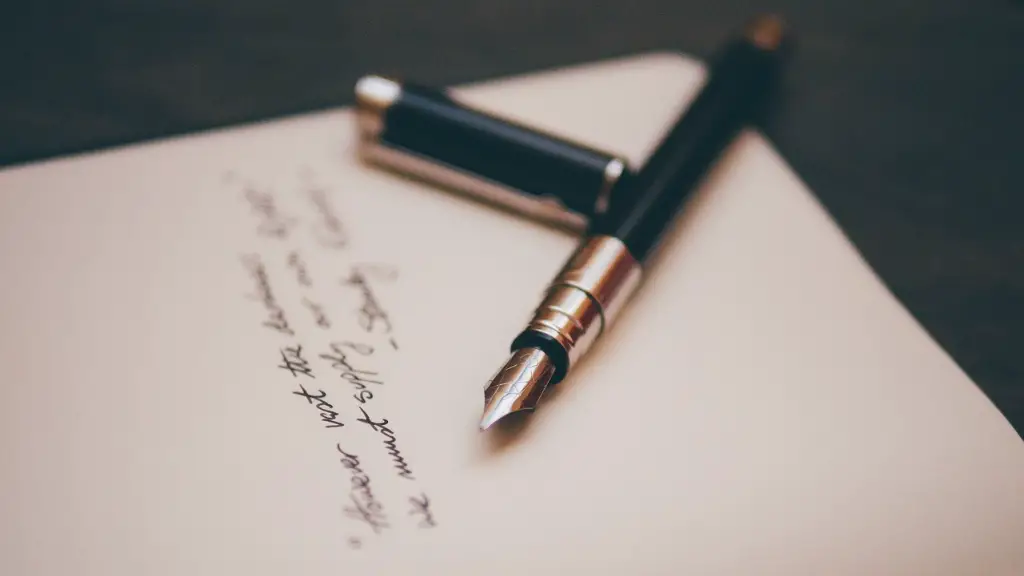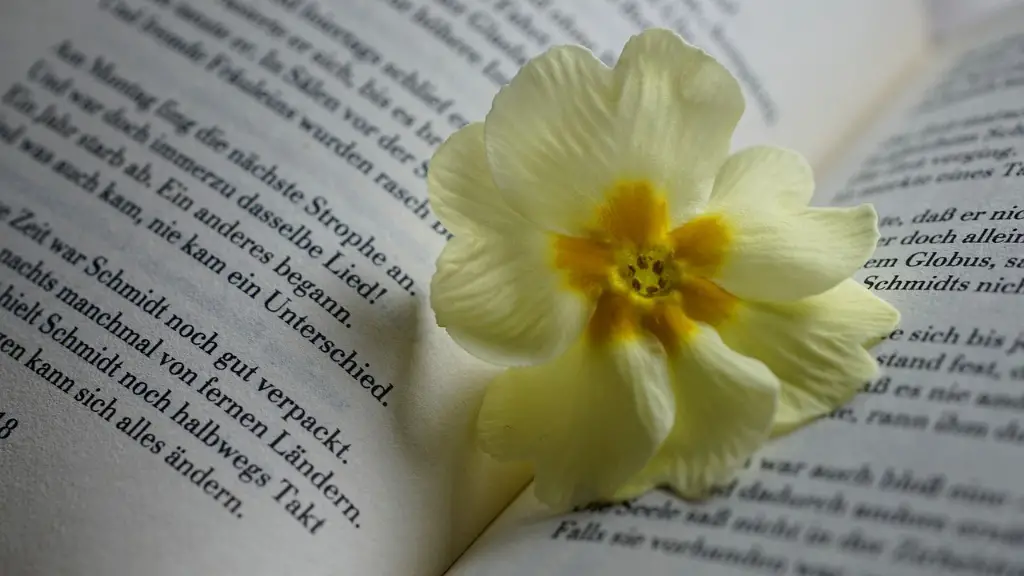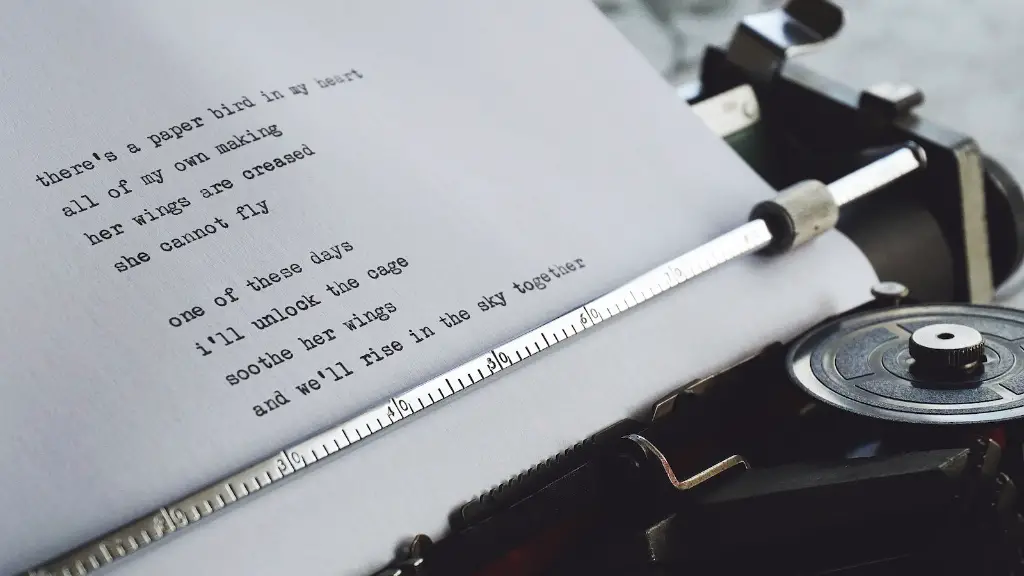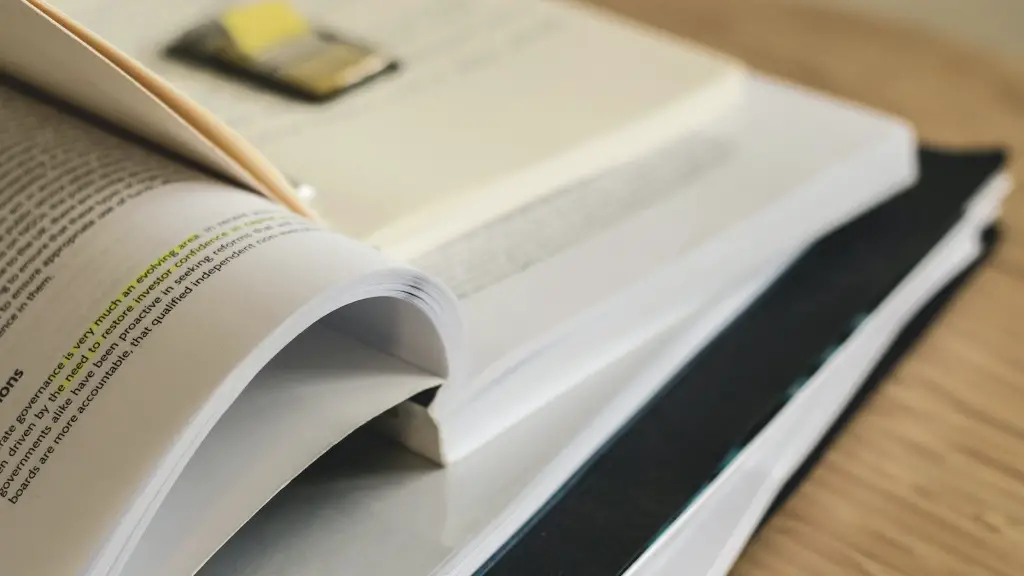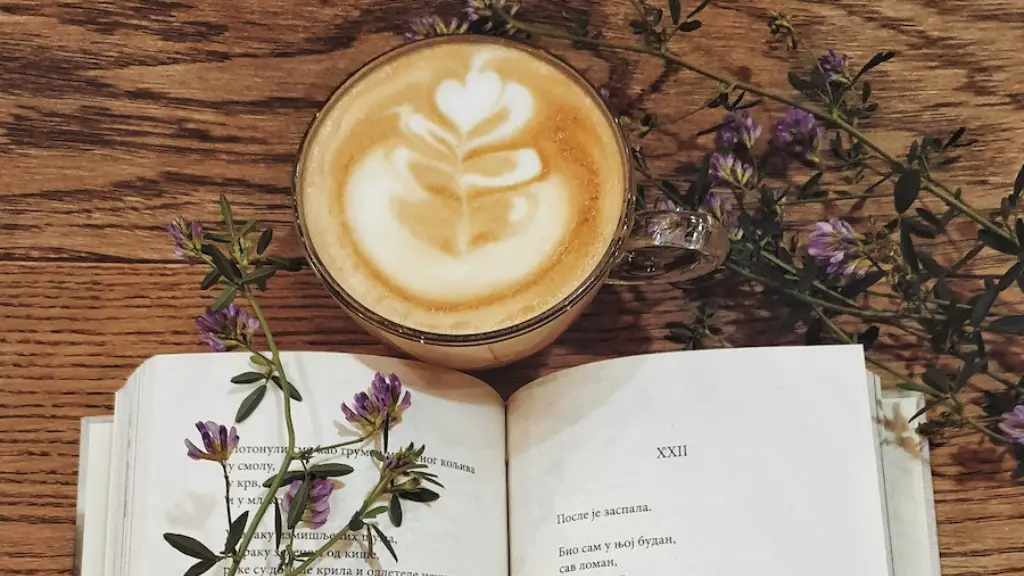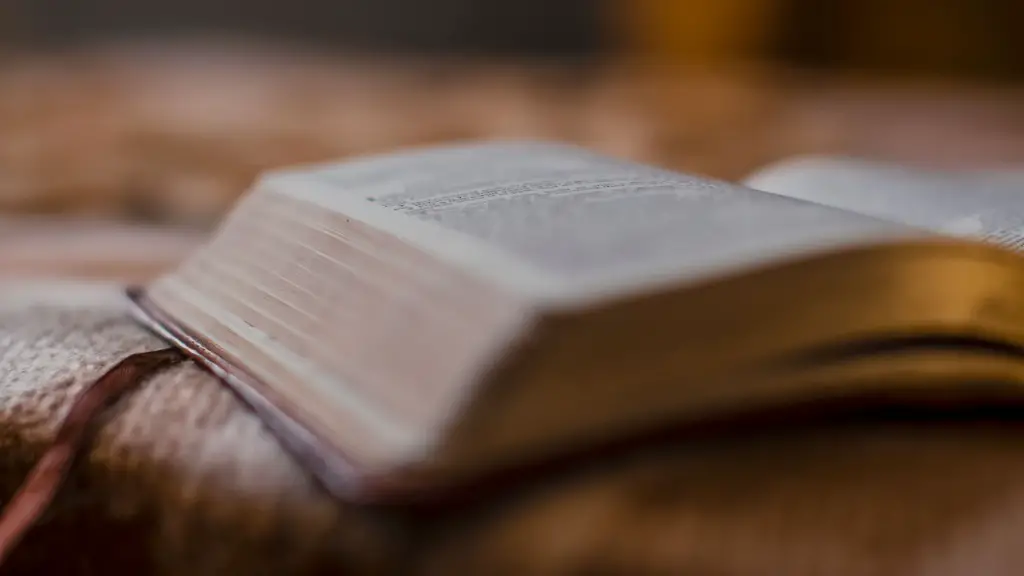Poetry has been around since the dawn of written history and it has been used to perform a wide range of functions from entertainment to social commentary. But one thing that makes poetry stand out among all other forms of communication is its use of sound devices. Sound devices are tools used by poets to enhance the meaning, emotion, and impact of their words.
Rhyme is one of the most prominent sound devices used in poetry. It is used to create a musical effect that ties the words together and adds to the reader’s enjoyment of the poem. For example, in the lines of Shakespeare’s “Sonnet 18”: “Shall I compare thee to a summer’s day?/Thou art more lovely and more temperate”, the rhyming words “day” and “temperate” draw attention to the words and subtly emphasize their meaning.
Alliteration is another sound device used in poetry. Alliteration occurs when words that begin with the same sound or letter are used close together. For example, in the line from Robert Frost’s “Stopping by Woods on a Snowy Evening”; “Whose woods these are I think I know”, the alliteration on the “w” sound serves to emphasize and imply a connection between the words “woods” and “whistle”.
Assonance is another sound device that is often used in poetry. Assonance is the repetition of vowel sounds in a line of poetry. For example, in Emily Dickinson’s poem “I felt a Funeral, in my Brain”, the line, “And strove to look at all with the same strain” contains a repetition of the vowel sound “a” that brings a mystical quality to the words.
Onomatopoeia is another sound device used in poetry. Onomatopoeia is the use of words that imitate or suggest the source of the sound that they describe. For example, in the poem “The Swing” by Robert Louis Stevenson, the words “swish” and “swoop” are examples of onomatopoeia that give a sense of movement and energy to the poem.
The last sound device often used in poetry is cadence. Cadence is the rhythm of a poem and the way in which the words are arranged to create a particular sound. For example, in Alfred Noyes’ “The Highwayman”, the alliteration and repetition of words such as “galloping”, “far, far away” and “clattered“ helps to create a sense of urgency and excitement in the poem.
Together, these sound devices serve to enhance the reading experience of a poem, making it more enjoyable and memorable. Through their use of sound devices, poets are able to manipulate the sound of their words and craft a unique reading experience for their readers.
Allusion
Another sound device often used in poetry is allusion. Allusion is the mentioning of one idea in the context of another and is used to convey a greater meaning than is immediately apparent. For example, in Shakespeare’s “Sonnet 18”, the line, “Thou art more lovely and more temperate” is an allusion to the Greek myth of Helios, the sun god, and suggests that the subject of the poem surpasses the beauty and control of even a god.
Allusions can also be used to create subtle connections between seemingly unrelated ideas and images. For example, in the poem “The Passionate Shepherd to His Love” by Christopher Marlowe, the speaker makes an allusion to the Garden of Eden when he suggests that “The shepherd’s home is paradise” and draws comparisons between the pastoral life and the perfect garden described in the Bible.
Allusion is a powerful tool for poets and provides them with the ability to create rich, vivid imagery and create emotional connections between their words and the reader. By using allusions, poets are able to evoke powerful ideas and feelings in the reader and create a lasting impression.
Personification
Another sound device often used in poetry is personification. Personification is the assigning of human qualities, emotions, and characteristics to inanimate objects and abstract ideas. For example, in William Wordsworth’s poem “Daffodils”, the speaker compares the “host of golden daffodils” to “a crowd, a host, of golden daffodils”, suggesting that they have the characteristics of a joyous crowd of people.
Personification is often used to create vivid and emotional descriptions of the poems’ subjects, giving them life and emotion that would otherwise be impossible to convey. For example, in the poem “The Tiger” by William Blake, the speaker personifies the tiger, giving it a power and ferocity that would otherwise be impossible to convey.
Personification is also used to create connections between the reader and the poem’s subjects, giving the reader an emotional stake in the poem. By assigning human qualities to its subjects, poets are able to make the reader sympathize with and relate to them, making their words have greater meaning and impact.
Metaphor
Another common sound device used in poetry is metaphor. Metaphor is a comparison between two unlike things without using the words “like” or “as”. For example, in the poem “The Road Not Taken” by Robert Frost, the speaker compares the path he is taking in life to a physical path and suggests that it is a difficult decision that will have lasting consequences.
Metaphors are often used in poetry to evoke powerful images and create deeper meanings for the words. For example, in the poem “To the Virgins, to Make Much of Time” by Robert Herrick, the speaker compares the passing of time to the killing of a flower, suggesting the passing of youth and beauty and the need to seize the moment.
Metaphors are also used to create vivid and meaningful connections between ideas that would otherwise seem unrelated. By drawing comparisons between unlike things, poets are able to make complex ideas more comprehensible and provide insights into their meaning and implications.
Imagery
Another sound device often used in poetry is imagery. Imagery is the use of vivid descriptions and sensory details to provide the reader with a mental image of the poem’s subject. For example, in the poem “The Lake Isle of Innisfree” by William Butler Yeats, the speaker provides a vivid and evocative description of the lake and its surrounding environment, painting a picture of a peaceful and idyllic setting for the reader.
Imagery is often used to create an emotional response in the reader, allowing them to engage with the poem on a more personal level. For example, in the poem “The Tyger” by William Blake, the speaker creates a vivid and terrifying description of the animal and its environment, creating a feeling of awe and fear in the reader.
Imagery is also used to create a sense of connection between the poet and the reader, allowing the poet to convey their feelings and emotions in more powerful and meaningful ways. By using vivid descriptions and sensory details, poets are able to bring their words to life and make the reader feel as though they are experiencing the poem right alongside them.
Simile
The last sound device often used in poetry is simile. Simile is a comparison between two unlike things using the words “like” or “as”. For example, in the poem “Dreams” by Langston Hughes, the speaker compares dreams to “a broken-winged bird that cannot fly”, suggesting that dreams can be difficult to achieve and keep alive.
Similes are often used to draw connections between two unlike things and make complex ideas easier to understand. For example, in the poem “The Lake Isle of Innisfree” by William Butler Yeats, the speaker compares his desire to be in the peaceful setting of the lake to a “deep-hearted joy”, suggesting that this place brings a sense of peace and joy to him.
Similes are also used to provide a more vivid description of the poet’s subject. For example, in the poem “The Cat and the Moon” by William Butler Yeats, the speaker compares the moon to a “ghost’s face”, creating a vivid image of a mysterious and eerie presence.
Overall, sound devices are essential tools for poets and can be used to enhance the reading experience of a poem and create connections with the reader. By utilizing these devices, poets are able to manipulate the sound of their words and craft powerful and moving pieces of literature.
